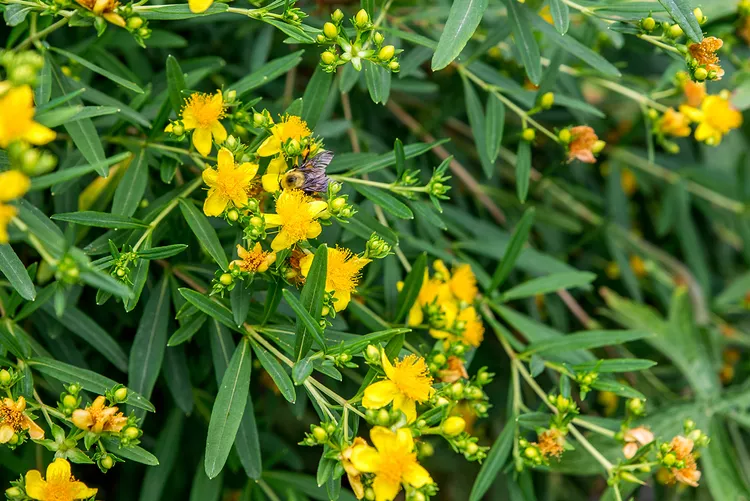
Description
Botanically called Hypericum perforatum, John’s wort (SJW) is a spreading, leafy herb that grows in open, disturbed places in most temperate regions of the world. St. John’s Wort is an evergreen perennial. Because of its spreading propensity, the width varies, but individual crowns can range in width from 30 to 40 cm. The higher portions of the plant have upright stems that branch out from the rhizomes.
Habitat
Originally from Europe, western Asia, and North Africa, St. johns wort is now extensively found in temperate regions of the world, such as South Africa, India, New Zealand, Australia, and parts of South America.
Uses
St. John’s wort is most frequently used to treat mood disorders and depression. Strong scientific evidence supports its efficacy in treating mild to moderate depression. Another usage for St. John’s wort is treating menopausal symptoms.

Varieties
There are more attractive shrubby species and cultivars in the Hypericum genus, such as:
Hypericum x inodorum ‘Elstead’: 4 feet tall and 5 ft broad; red fruit; zones 6 to 9.
Hypericum x moserianum ‘Tricolour’: zones 6 to 9, 1 to 2.5 feet tall, slightly wider at the base; variegated leaves (pink, green, and creamy-white).
Plant Care
- Light
For optimal flower production in the North, grow St. John’s wort in full sun. But in the South, slight shade is beneficial to the plant.
- Soil
The plant can withstand compacted soil, even though it favors well-drained soil.
- Water
When you first try to establish this perennial, make sure it receives enough irrigation. Once fully grown, it can withstand some drought.
- Fertilizer
While it may survive in poor soils, St. John’s Wort thrives in fertile soils. For optimal effects, amend the soil with compost once a year.
Table





